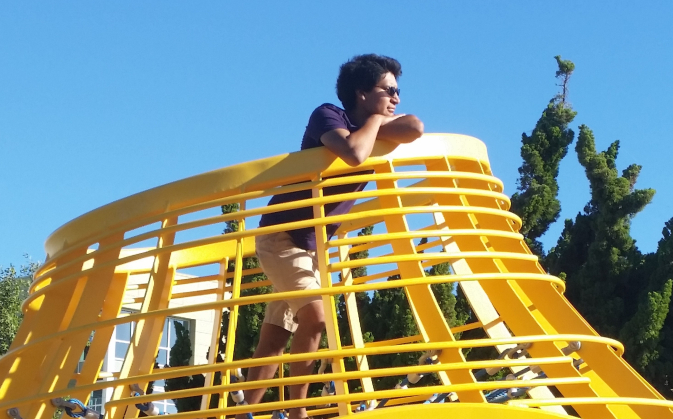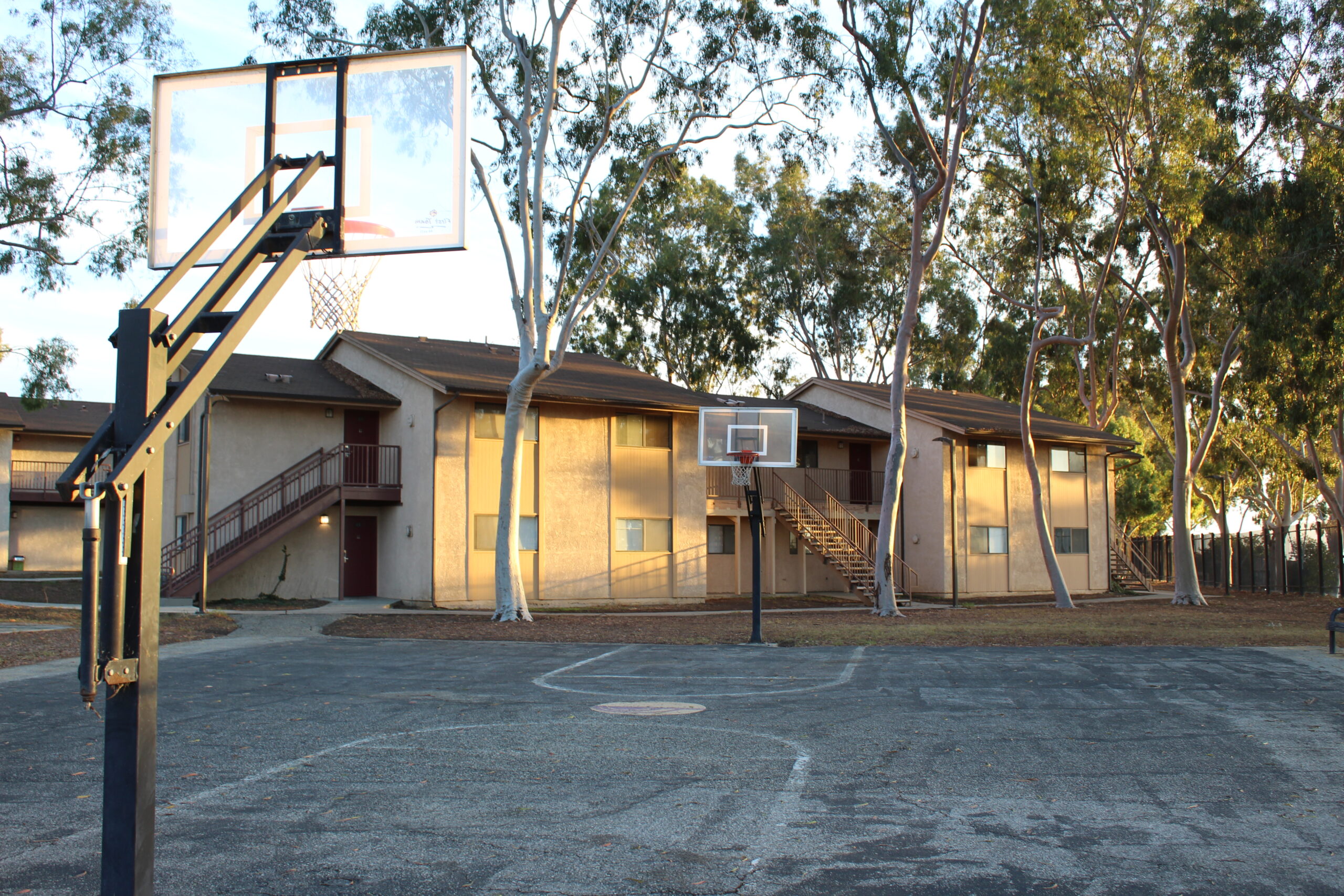This coyote was spotted one early morning near Lot 2. While no real threat to humans, coyotes are still wild animals that need their own space

CSUDH campus attracts far more than two-legged animals…
By Maria Villa
Staff Writer
Students may realize that California State University, Dominguez Hills is one of the most diverse campuses in the state, with students from every background and countries from across the globe. But they may not realize how diverse our wildlife is.
And, no, we’re not talking about Teddy the Toro. Though some are hard to spot, at any given time in the day, or night, our campus is shared by some of the following animals: rabbits, raccoons, opossums, squirrels, coyotes, lizards and snakes.
But don’t fret. Though you never want to approach a wild animal or try to pet it or feed it, students don’t need to be worried about sharing our campus with other animals. In fact, John Thomlinson, a professor and the chair of the biology department, said we should celebrate their presence.
“Next time you are outside look up, look around, listen there are birds singing out there and everywhere,” Thomlinson said. “And, if you are very lucky, you’ll see a coyote scouting around and it just makes the day better when you see wildlife.”
That doesn’t mean you should sit down and share your lunch with them. Thomlinson’s suggestion is to not approach our wildlife, even those cute lovable squirrels, who are known to get aggressive if pestered.
“We need some level of wildness and that means that wild animals should stay wild and away from humans,” said Thomlinson.
Squirrels, believe it or not, may be the most dangerous of the animals on campus, because people often try to feed them out of their hands and that can make them aggressive. Thomlinson said to remedy that situation, don’t try to feed them. The same goes with raccoons, which can be seen at night, usually foraging for food in and around dumpsters. Though they may look cute, they’re also wild animals. And, you certainly don’t want to bother a mother raccoon with babies.
As far as coyotes, which are rarely seen but do roam around campus, again, generally at night, they are far more wary of humans than we are of them, so they pose no real danger, Thomlinson said.
And while members of the track team have seen an occasional glimpse of a rattlesnake in the area north of the track on the way to the StubHub Center, those reptiles are only aggressive when frightened and accosted, and the most common snakes on this campus are harmless gopher snakes.
Though CSUDH is located in an urban setting, the presence of so many native plants and the natural landscape helps sustain our wildlife. Thomlinson said that since the campus is located so close to the Dominguez Channel, which animals like coyotes use as a corridor to move from place to place, and also to the Links at Victoria Golf Course, CSUDH is connected to a larger ecosystem.
“The habitat on campus is a vital part of the landscape that supports wildlife in this area,” he said.
And, even though we may be startled by seeing an unfamiliar animal on campus, Thomlinson said that we need them, mostly to remind us that this world is about far more than the two-legged creatures that dominate it.
“It’s a privilege to have nature on a campus like this,” Thomlinson said.


